Knives are essential tools in any kitchen. Each type of knife has a specific purpose and it is important to know the differences between them to make accurate and efficient cuts. In this article, we will introduce the main types of kitchen knives.
Chef’s Knife
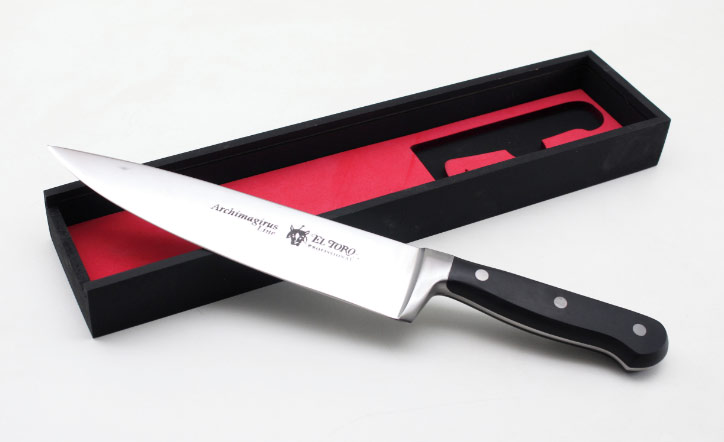
Faca do Chef
The chef’s knife, also known as a chef’s knife or a cook’s knife, is one of the most versatile and used in the kitchen. It has a long, sharp blade, ideal for cutting, slicing and chopping foods of different sizes and textures.
Santoku Knife
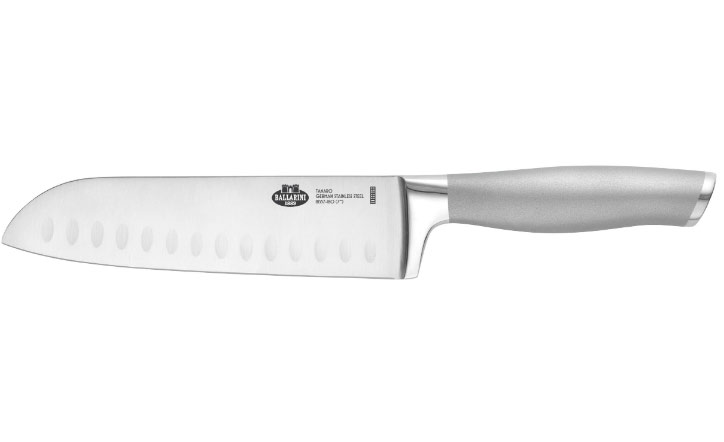
Faca Santoku
The Santoku knife originates from Japan and stands out for its wide blade with small grooves. It is ideal for precisely cutting meat, vegetables and fish. Its shape facilitates the rocking motion while cutting.
Bread Knife
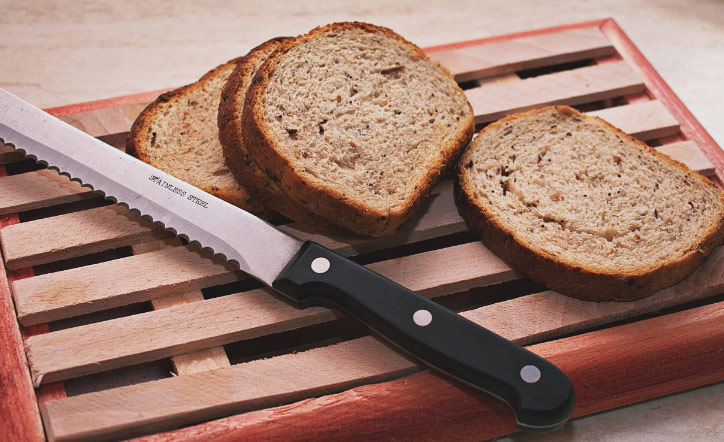
Bread Knife
The bread knife has a serrated blade that allows you to cut bread without crushing it. Its sharp teeth facilitate even cutting, ensuring perfect slices.
Filling Knife
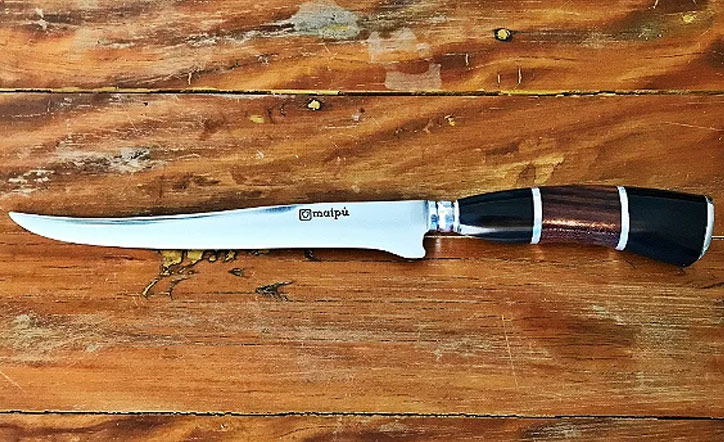
Filling Knife
The filleting knife is ideal for cutting fish and meat into thin slices. It has a long, flexible and sharp blade that allows you to make precise cuts without waste.
Boning knife
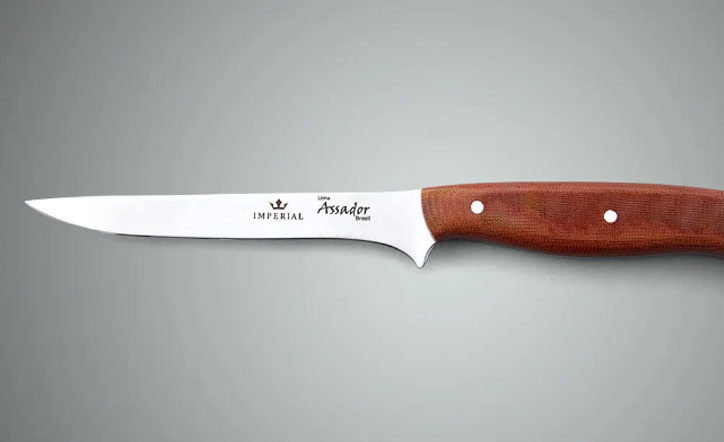
Boning knife
The boning knife has a narrow, rigid blade, perfect for removing bones from meat and poultry. Its sharp tip facilitates access to more difficult areas.
Vegetable Knife
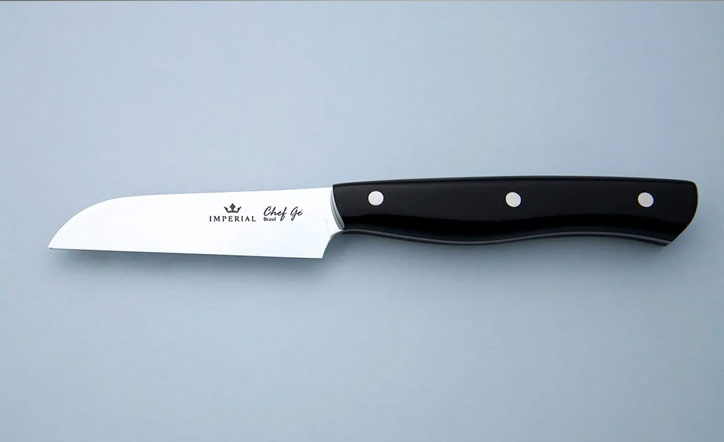
Vegetable Knife
The vegetable knife has a short, pointed blade, ideal for precisely peeling, chopping and slicing vegetables. It is an indispensable tool in the preparation of salads and garnishes.
Tomato Knife
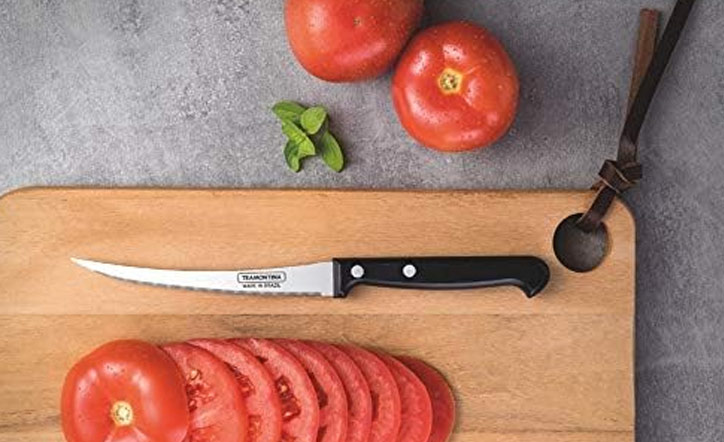
Tomato Knife
The tomato knife has a serrated blade that makes it easy to cut tomatoes without crushing them. Its sharp teeth ensure perfect slices, preventing tomato juice from spilling out.
Sashimi Knife
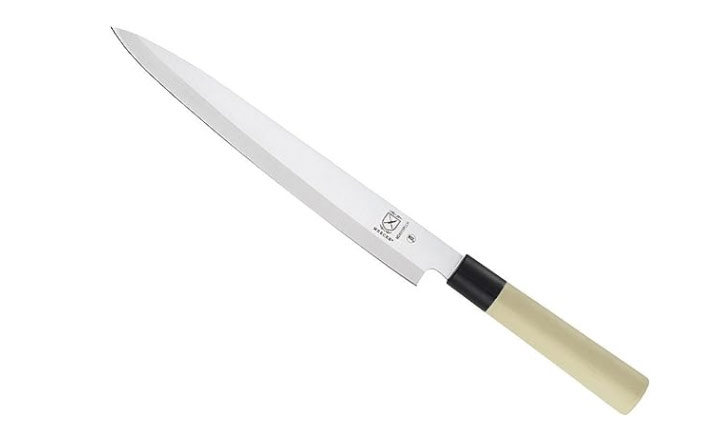
Sashimi Knife
The sashimi knife is used in Japanese cuisine to cut fish into thin slices. It has a long, straight and extremely sharp blade, allowing a precise and smooth cut.
Cheese Knife
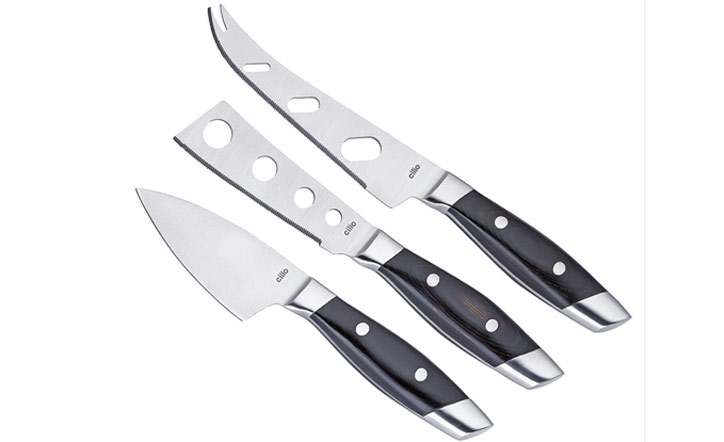
Cheese Knife
The cheese knife has a wide blade with small holes, ideal for cutting cheeses of different textures. Its holes prevent the cheese from sticking to the blade during cutting.
Peeling Knife
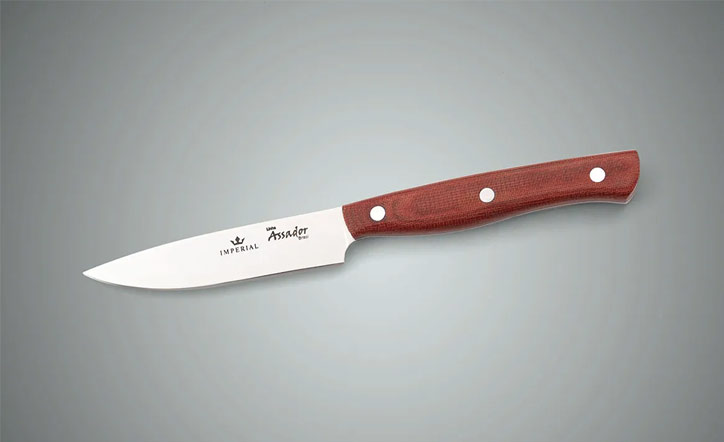
Peeling Knife
The paring knife, as its name suggests, is used to peel fruits and vegetables. It has a short, pointed blade, making it easier to handle and remove the bark.
Carving Knife
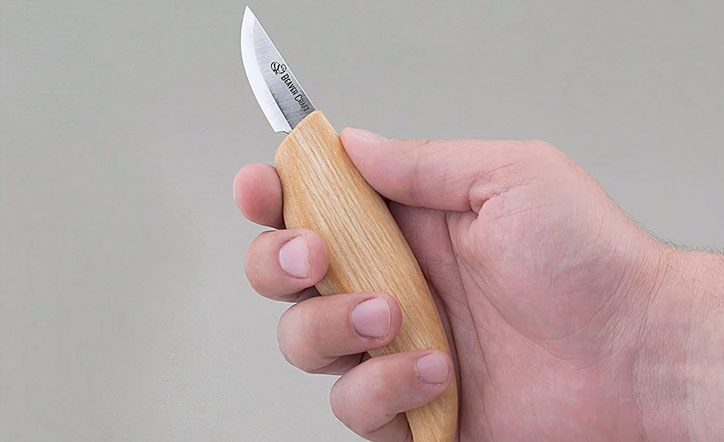
Carving Knife
The carving knife is ideal for cutting roasted or grilled meats. It has a long, sharp blade that allows you to slice meat with precision, maintaining juiciness and flavor.
Final Considerations
Knowing the different types of kitchen knives is essential to improve efficiency in food preparation. Each knife has specific characteristics that suit different cuts and ingredients. In addition, it is important to always keep knives sharp and in good condition to ensure accurate and safe cuts.
Choosing the right knives for each type of food and cutting technique can make all the difference in the final result of the dishes. So invest in quality knives and learn to use them correctly.
Also remember to always be careful when handling sharp knives, keeping your fingers away from the blade and using proper cutting boards.
With the right knives and a little practice, you’ll be ready to make perfect cuts and venture into the kitchen with more confidence!
Also, it is important to remember that safety is paramount when using knives in the kitchen. Never leave knives within reach of children and always store them in safe places.
Learning how to sharpen knives correctly is also essential. A well-sharpened knife is safer and more efficient than a dull knife. There are several sharpening methods, such as the use of whetstones, electric sharpeners or even professional services.
Another important point is the cleaning of the knives. After use, wash them immediately with soap and water and dry them thoroughly before storing. Avoid soaking knives or washing them in the dishwasher, as this can damage the blade’s edge.
Finally, remember that each type of food requires a specific cutting technique. Research the different cuts like julienne, brunoise, chiffonade and more and practice them to improve your cooking skills.
With these tips in mind, you’ll be prepared to use your knives safely and get amazing results in your recipes!



